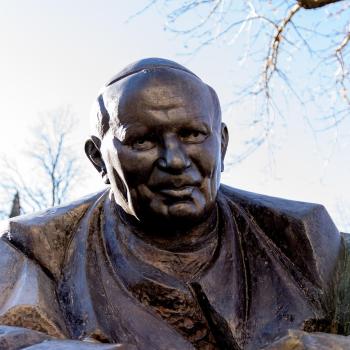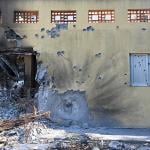THE QUESTION:
What do the latest statistics tell us about the worldwide Catholic Church?
THE RELIGION GUY’S ANSWER:
The Vatican’s Central Office of Church Statistics issued a summary report in February that says as of December 31, 2020, Catholicism had 1.36 billion adherents worldwide. That equals an impressive 17.7% of the world’s people and keeps pace with over-all population growth. The church’s gain of 16 million members over 2019 exceeds the combined populations of New York City, Los Angeles and Chicago.
The Guy would note, however, that the church counts as members all baptized infants, who as adults will not necessarily be active parishioners.
John L. Allen Jr., the editor of cruxnow.com and a go-to guy on Catholic trends, writes that these numbers counter western perceptions that “the church is shrinking” in the wake of sexual abuse scandals and other problems.
But Catholic expansion is centered in Africa and Asia, not western nations, and the church faces a personnel problem. The Vatican office admits that yet again there’s an “obvious imbalance” in the geographical distribution of the slowly decreasing ranks of priests, currently totaling 410,219 worldwide. There’s also declining enrollment in seminaries, now totaling just under 112,000, with only Africa showing an increase. Remarkably, Africa plus Asia produce 60% of the globe’s seminary students.
Let’s drill down on the numbers.
From 2019 to 2020 membership barely grew by 0.3% in Europe compared with 1.8% in Asia and 2.1% in Africa. Africa has 18.9% of the world’s Catholics, or 236 million, but only 12.3% of the priests. By comparison, Europe has just over 20% of the Catholic population but 40% of the world’s priests minister there. North and South America command 48% of the Catholic population but only 29.3% of the priests. However Asia, with 11% of Catholics, is served by 17.3% of the priests.
Putting it another way, there’s one priest for every 3,314 Catholics over-all but one per 1,746 in Europe, one per 2,086 in the Americas and a severe shortage in Africa with 5,089 members per priest.
Allen comments that “if the Catholic Church were a well-run business, it would reallocate personnel to serve the area of greatest market growth. . . . It doesn’t take a Harvard M.B.A. to figure out something’s wrong with this picture. Not only are church authorities not doing anything to correct the situation, they’re actually making it worse by signing off on transfers of personnel from south to north rather than the other way around.”
On that, Allen remarks that if “all the Mexican, Colombian, Vietnamese, Korean, Filipino, Nigerian, Ugandan and Congolese priests serving in American dioceses” were to move back to their home countries the U.S. church “might as well post a ‘Going Out of Business’ sign” at most cathedrals.
A distinctive aspect of Catholicism is the “professed women” or “sisters” in religious orders, often called “nuns” though many do not fit that label, which signifies strict traditional disciplines or cloistered lives. Here again, the current 619,546 total, significantly larger than the total for priests, results from increases in Africa and Asia that contrast with decline elsewhere.
An article last week for theconversation.com was headlined “Why the future of the world’s largest religion is female — and African.” The writer is Gina Zurlo, co-editor of the invaluable World Christian Encyclopedia (with its statistics and information for all religions in all nations). This Boston University and Gordon-Conwell Theological Seminary demographer is researching women’s role in religion.
The “largest religion” in the headline is, of course, Christianity, and Catholicism is by far its largest branch. Zurlo says women are a 52% majority of the world’s Christians and very often exceed that percentage in active attenders. They are “the majority of the church nearly everywhere in the world,” and the “future is poised to be shaped by African women in particular.” Africa as a whole has 27% of the world’s Christians, and the figure projected for 2050 is likely to reach 39%. In Africa south of the Sahara desert, the median age of Christians is a markedly young 19. In Catholicism, she notes, sisters outnumber male priests in Africa and every other continent.
Driven in part by the priest shortage, the Vatican is engaged in another round of the long-running discussion about whether women could be ordained as deacons, who perform many functions associated with the priesthood. Women priests, however, are a long way off, if ever.
That then brings us to Pope Francis’ apostolic constitution Praedicate Evangelium issued March 19, that starting June 5 will define a revamping of the Roman Curia. This document took nine years to produce and follows prior restructuring proclaimed in 1588, 1908, 1967, and most recently by Pope John Paul II in 1988.
One of the most notable changes is that lay members will be eligible to fill many administrative leadership posts in the Vatican bureaucracy. That includes sisters and lay women as well as laymen, who would have major influence in governing world Catholicism. Jesuit journalist Thomas Reese contends that “the Vatican Curia will never be truly reformed as long as the top positions must be filled by cardinals and bishops” who are, of course, all male. .












